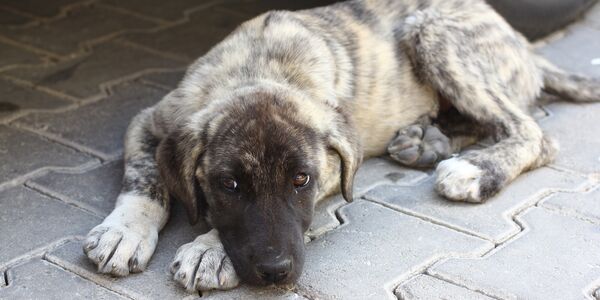No matter their size or habitat, cats will always embrace their feline instincts. Whether they’re prowling through the wild savannas of Africa or curled up in a cozy home, their curiosity knows no bounds. If there’s a box, they’ll claim it. If something scurries past, they’ll pounce. And when faced with an unfamiliar, moving object, their reactions are always entertaining. But what happens when a seemingly enormous bug sets its sights on a cheetah cub? The result is a delightful, unexpected spectacle that leaves both cubs and spectators thoroughly amused.

At the Cincinnati Zoo & Botanical Garden, three cheetah cubs—Zola, Kiara, and Lulu—are busy exploring their surroundings. As members of the zoo’s Cat Ambassador Team, they have the freedom to roam while their caretakers prepare meals. But their usual routine is interrupted when an unexpected intruder scuttles into the scene—a giant, motorized centipede toy.
At first, confusion reigns. The mechanical bug zigzags across the floor, triggering startled reactions from the cubs. Some leap back in surprise, while the bolder ones cautiously swat at the strange creature. Their instincts as predators kick in, but the sheer unpredictability of the toy keeps them guessing. It moves in ways they aren’t used to, unlike the prey they would typically stalk in the wild.
One cub lets curiosity override caution, inching closer with careful steps before tentatively pawing at the centipede. The toy wriggles and scurries forward, sending the cub skidding backward in alarm. Meanwhile, another cub crouches, tail flicking in anticipation, waiting for the perfect moment to pounce. The third cub watches from a safe distance, unsure whether to join the action or stay put.
The handlers, watching from the sidelines, can’t help but laugh at the hilarious reactions. Their amusement grows when one of them picks up the centipede, presenting it to the cubs. This shift in perspective sparks another round of curiosity, as the young cheetahs bat at the dangling toy with newfound fascination. But the real excitement begins when the centipede is returned to the floor, where its unpredictable movements once again send the cubs into a flurry of activity.

While this playful moment provides endless entertainment, it also serves an important purpose. These cheetah cubs are part of the Cincinnati Zoo’s Animal Ambassador program, an initiative designed to educate visitors about wildlife conservation. Their training regimen includes interactive play, nature walks, and high-speed running sessions, all of which help them develop essential physical and mental skills.
Cheetahs are the fastest land animals, capable of reaching speeds up to 70 miles per hour. The zoo’s live demonstrations allow visitors to witness this incredible ability firsthand. Eventually, Zola, Kiara, and Lulu will take part in these demonstrations, giving audiences a rare opportunity to see cheetahs in motion while learning about the conservation efforts needed to protect their species.
The Animal Ambassador program plays a crucial role in wildlife conservation. By fostering curiosity and appreciation for these magnificent animals, the program encourages greater public engagement in preservation efforts. Visitors who form connections with the cheetahs during their visit may be more inclined to support conservation initiatives, donate to wildlife organizations, or even advocate for policies that protect endangered species.
Beyond their role in education, Zola, Kiara, and Lulu also serve as representatives of their wild counterparts. With cheetah populations declining due to habitat loss, human-wildlife conflict, and poaching, initiatives like this help bring attention to the urgent need for conservation efforts.

Through moments of play, like their encounter with the motorized centipede, these cubs are not only learning and growing, but they’re also helping to inspire a new generation of wildlife enthusiasts.
For those eager to learn more about the cheetah cubs, their training, and the broader conservation mission, visiting the Cincinnati Zoo’s official website is a great place to start. Every bit of support helps in the mission to protect these extraordinary animals and ensure their survival for generations to come.

 Toledo, United States.
Toledo, United States.